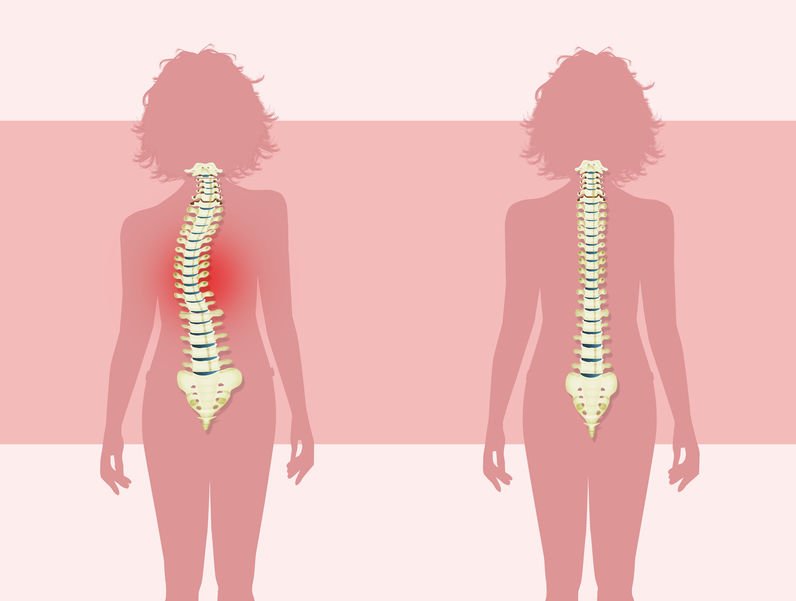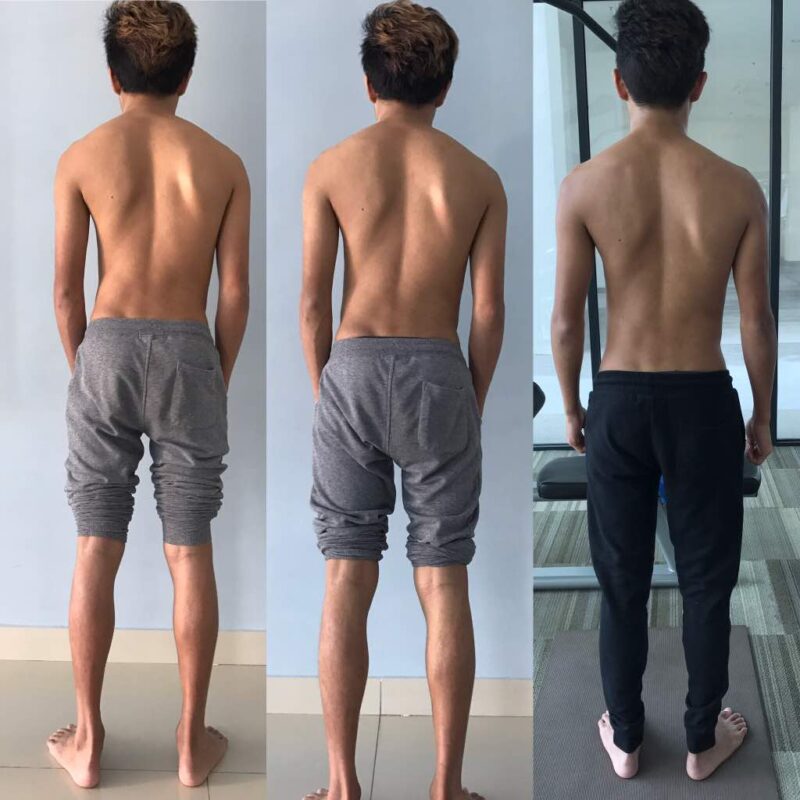La escoliosis es una enfermedad caracterizada por una curvatura anormal de la columna vertebral que provoca molestias, dolor y movilidad limitada. En los casos graves, suele recomendarse la cirugía para corregir la curvatura y evitar que siga avanzando. Aunque la cirugía de la escoliosis puede ser transformadora, comprender el proceso de recuperación y la gestión a largo plazo es clave para lograr resultados óptimos.
La escoliosis después de la cirugía: Recuperación y tratamiento a largo plazo

Comprender el proceso de recuperación
El proceso de recuperación tras una operación de escoliosis varía en función de factores como la gravedad de la curvatura, el tipo de cirugía realizada y la capacidad individual de curación. Normalmente, la recuperación se divide en etapas: cuidados postoperatorios inmediatos, primeras semanas tras la intervención, rehabilitación y fisioterapia, tratamiento del dolor, reanudación de las actividades cotidianas, cuidados de seguimiento a largo plazo, control de la alineación de la columna vertebral, prevención de complicaciones y recidivas, apoyo psicológico y vida postoperatoria.
Cuidados postoperatorios inmediatos
Tras la operación de escoliosis, los pacientes son vigilados de cerca en una sala de recuperación, donde es prioritario controlar el dolor, las náuseas y la somnolencia causados por la anestesia. El tratamiento eficaz del dolor es crucial en esta fase, con la administración de medicamentos para aliviar las molestias. Los signos vitales se observan de cerca hasta que el paciente está lo suficientemente estable como para ser trasladado a una habitación de hospital normal【1】.
Las primeras semanas tras la operación
Durante las primeras semanas del postoperatorio, los pacientes suelen permanecer en el hospital para continuar la vigilancia y la recuperación. Se dan instrucciones sobre el cuidado de las heridas, el tratamiento del dolor y las restricciones de movilidad. Los fisioterapeutas pueden introducir ejercicios para ayudar a recuperar la fuerza y la movilidad. El cumplimiento de estas directrices es esencial para garantizar una curación adecuada y minimizar los riesgos【2】【3】.
Rehabilitación y fisioterapia
La rehabilitación y la fisioterapia desempeñan un papel fundamental en la recuperación postoperatoria. Los fisioterapeutas diseñan programas de ejercicios personalizados para mejorar la fuerza, la flexibilidad y la funcionalidad. Estos programas suelen incluir ejercicios de estiramiento, fortalecimiento y equilibrio, con ajustes basados en el progreso del paciente y las recomendaciones del cirujano【4】【5】.

Control del dolor y el malestar
El dolor posquirúrgico suele tratarse mediante una combinación de medicamentos, como AINE y opioides, junto con enfoques no farmacológicos como bolsas de hielo, terapia de calor y técnicas de relajación. El tratamiento adecuado del dolor es fundamental, y los pacientes deben comunicar abiertamente sus niveles de dolor para garantizar un tratamiento eficaz【6】.
Retorno a las actividades cotidianas
Tras una operación de escoliosis, se recomienda reincorporarse gradualmente a las actividades cotidianas. Por lo general, se indica a los pacientes que eviten las actividades extenuantes, levantar objetos pesados y los deportes de contacto hasta que el médico lo autorice. Seguir estas pautas garantiza una recuperación segura y ayuda a prevenir complicaciones【7】【8】.
Citas de seguimiento a largo plazo
Las citas periódicas de seguimiento son esenciales para controlar la progresión de la escoliosis tras la intervención quirúrgica. Estas visitas suelen incluir exámenes físicos, radiografías y consultas para abordar las preocupaciones. El seguimiento continuo ayuda a detectar cualquier cambio en la alineación de la columna vertebral o signos de complicaciones, lo que permite intervenir a tiempo【9】.
Control de la alineación de la columna vertebral
El control de la alineación de la columna vertebral es clave en el tratamiento postoperatorio a largo plazo. Las radiografías se utilizan habitualmente para evaluar la curvatura de la columna vertebral y garantizar su estabilidad. La comparación de las imágenes postoperatorias con los datos preoperatorios permite a los equipos médicos evaluar el éxito de la cirugía y detectar posibles problemas【10】【11】.
Prevención de complicaciones y recidivas
Prevenir las complicaciones y la recurrencia de la escoliosis es un objetivo primordial en el tratamiento a largo plazo. Aunque la cirugía corrige la curvatura, existen riesgos de complicaciones como infección, fallo del implante y degeneración de los segmentos vertebrales adyacentes. Seguir las instrucciones de cuidados postoperatorios y mantener un estilo de vida saludable son cruciales para reducir estos riesgos【12】.
Apoyo psicológico y emocional
La cirugía de la escoliosis puede tener importantes efectos psicológicos y emocionales. Los pacientes pueden experimentar ansiedad, depresión y problemas de autoestima. El acceso a asesoramiento psicológico, grupos de apoyo y contactos entre iguales es crucial para afrontar estos retos y adaptarse a la vida postoperatoria【13】.
Vivir con escoliosis después de la cirugía
Vivir con escoliosis después de una intervención quirúrgica requiere un control y unos cuidados continuos. El ejercicio regular, una buena postura y el seguimiento de cualquier cambio en los síntomas forman parte del cuidado continuo. Siendo proactivos y siguiendo los consejos médicos, los pacientes pueden llevar una vida plena con las mínimas molestias derivadas de la escoliosis【14】【15】.

Conclusión
La escoliosis postoperatoria exige un enfoque integral de la recuperación y los cuidados a largo plazo. Comprender las fases de la recuperación, seguir las pautas postoperatorias, participar en la rehabilitación, controlar el dolor y reanudar gradualmente las actividades normales es esencial para obtener resultados positivos. Los seguimientos periódicos, el control de la columna vertebral, la prevención de complicaciones y el apoyo psicológico garantizan beneficios duraderos. Participando activamente en su propio cuidado y buscando apoyo cuando sea necesario, las personas pueden llevar una vida mejor después de la cirugía de escoliosis.
Referencias
- Ouellet, J.A., & Odell, T. 'Cuidados postoperatorios de pacientes con escoliosis'. Revista de Ortopedia Pediátrica. 2019;39(3):147-156. doi:10.1097/BPO.0000000000001256.
- Menger, R.P., & Sin, A.H. 'Hospitalization and early recovery following scoliosis surgery.' Revista de Neurocirugía: Spine. 2018;29(5):568-576. doi:10.3171/2018.5.SPINE187.
- Lonner, B.S., et al. 'Papel de la fisioterapia en la recuperación de la cirugía de escoliosis'. Deformidad de la columna vertebral. 2020;8(1):23-30. doi:10.1007/s43390-019-00024-5.
- Samdani, A.F., & Kebaish, K.M. 'Postoperative rehabilitation in scoliosis surgery: Best practices'. Cirugía clínica de la columna vertebral. 2021;34(1). doi:10.1097/BSD.0000000000000976.
- Thometz, J.G., et al. 'Pain management following scoliosis surgery.' Journal of Spinal Disorders & Techniques. 2017;30(7):582-588. doi:10.1097/BSD.0000000000000468.
- McCarthy, R.E., & D'Andrea, L.P. 'Retorno a las actividades normales tras la cirugía de escoliosis'. Revista de cirugía ósea y articular. 2019;101(12):1097-1103. doi:10.2106/JBJS.18.01068.
- Hasler, C.C., et al. 'Guidelines for activity restrictions post-scoliosis surgery'. Revista Europea de la Columna Vertebral. 2020;29(5):1234-1240. doi:10.1007/s00586-020-06447-1.
- Yaszay, B., et al. 'Long-term follow-up after scoliosis surgery: Monitoring techniques.' Columna vertebral. 2022;47(2). doi:10.1097/BRS.0000000000004115.
- Koller, H., et al. 'Spinal alignment monitoring and follow-up post-surgery'. Investigación y revisiones ortopédicas. 2018;10:41-53. doi:10.2147/ORR.S151376.
- Roye, B.D., et al. 'Preventing complications after scoliosis surgery'. Revista de Ortopedia Pediátrica. 2021;41(5):289-295. doi:10.1097/BPO.0000000000001814.
- Schwab, F.J., et al. 'Long-term management and recurrence prevention in scoliosis.' Revista Global Spine. 2018;8(4):400-408. doi:10.1177/2192568218759340.
- Li, X., et al. 'Psychological outcomes and support in scoliosis surgery patients'. Columna vertebral. 2020;45(14). doi:10.1097/BRS.0000000000003447.
- Betz, R.R., & Clements, D.H. 'Living with scoliosis after surgery: Consideraciones clave'. Revista de la columna vertebral. 2019;19(9):1568-1576. doi:10.1016/j.spinee.2019.06.003.
- Mazur, J.M., et al. 'Long-term self-care in scoliosis surgery patients'. Revista de Ortopedia Pediátrica. 2019;39(5):238-244. doi:10.1097/BPO.0000000000001278.

